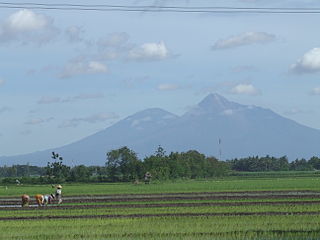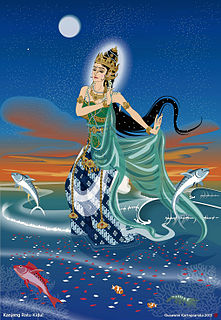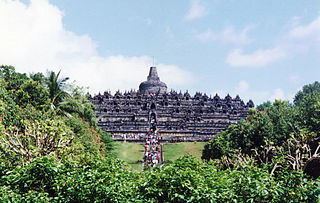Sunan is the shorter version of "Susuhunan", both used as an honorific in Java Indonesia.
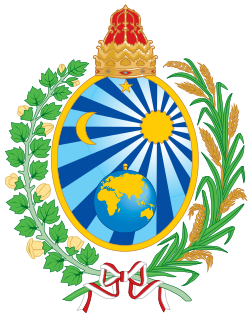
Susuhunan, or in short version Sunan, is a title used by the monarchs of Mataram and then by the hereditary rulers of Surakarta, Indonesia.
An honorific is a title that conveys esteem or respect for position or rank when used in addressing or referring to a person. Sometimes, the term "honorific" is used in a more specific sense to refer to an honorary academic title. It is also often conflated with systems of honorific speech in linguistics, which are grammatical or morphological ways of encoding the relative social status of speakers.

Java is an island of Indonesia, bordered by the Indian Ocean on the south and the Java Sea on the north. With a population of over 141 million or 145 million, Java is the home to 56.7 percent of the Indonesian population and is the world's most populous island. The Indonesian capital city, Jakarta, is located on its northwestern coast. Much of Indonesian history took place on Java. It was the center of powerful Hindu-Buddhist empires, the Islamic sultanates, and the core of the colonial Dutch East Indies. Java was also the center of the Indonesian struggle for independence during the 1930s and 1940s. Java dominates Indonesia politically, economically and culturally. Four of Indonesia's eight UNESCO world heritage sites are located in Java: Ujung Kulon National Park, Borobudur Temple, Prambanan Temple, and Sangiran Early Man Site.
According to Hamka in his book Dari Perbendaharaan Lama the word derived from a Javanese word for position (susunan) of hands in reverential salutation, done with hands pressed together, palms touching and fingers pointed upwards, and bowing. This arrangement which has some similarities with Indian "namaste" is called "sembah", which is used to honor and praise. From this "Susuhunan" can mean someone to give the "susunan"/"sembah" to a revered person. Another word for "Susuhunan" is "Sesembahan". [1]

Prof. Dr. Haji Abdul Malik bin Dr. Syekh Haji Abdul Karim Amrullah, better known by the nickname Hamka, was an Indonesian ulama, novelist, philosopher and political activist.

Javanese is the language of the Javanese people from the central and eastern parts of the island of Java, in Indonesia. There are also pockets of Javanese speakers on the northern coast of western Java. It is the native language of more than 98 million people.

Namaste, sometimes spoken as Namaskar and Namaskaram, is a customary Hindu greeting. In the contemporary era, it is found on the Indian subcontinent, Southeast Asia and among the Hindu diaspora worldwide. It is used both for salutation and valediction. Namaste is usually spoken with a slight bow and hands pressed together, palms touching and fingers pointing upwards, thumbs close to the chest. This gesture is called Añjali Mudrā or Pranamasana.
This title is given by the Javanese and Sundanese to rulers, clerics and even deities. A common usage is for the 'Sunans', or the Nine Saints (Wali Songo), who were the spreaders of Islam in Java. Also, Sunan Ambu (Queen Mother/Goddess Mother) is a female deity revered by the Sundanese.[ citation needed ]

The Javanese are an ethnic group native to the Indonesian island of Java. With approximately 100 million people, they form the largest ethnic group in Indonesia. They are predominantly located in the central to eastern parts of the island. There are also significant numbers of people of Javanese descent in most provinces of Indonesia, Malaysia, Singapore, Suriname, Saudi Arabia and the Netherlands.
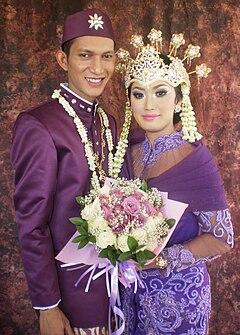
The Sundanese are an Austronesian ethnic group native to the western part of the Indonesian island of Java. They number approximately 40 million, and form Indonesia's second most populous ethnic group, after the neighboring Javanese. In their language, Sundanese, the Sundanese refer to themselves as Urang Sunda, while Orang Sunda or Suku Sunda is its Indonesian equivalent.

